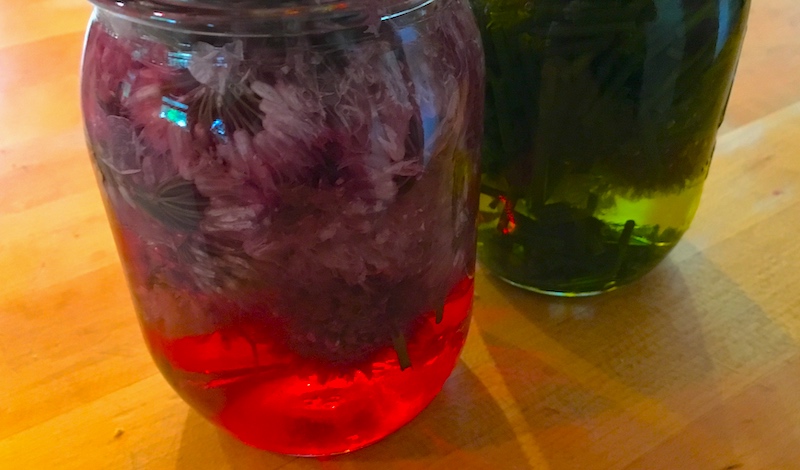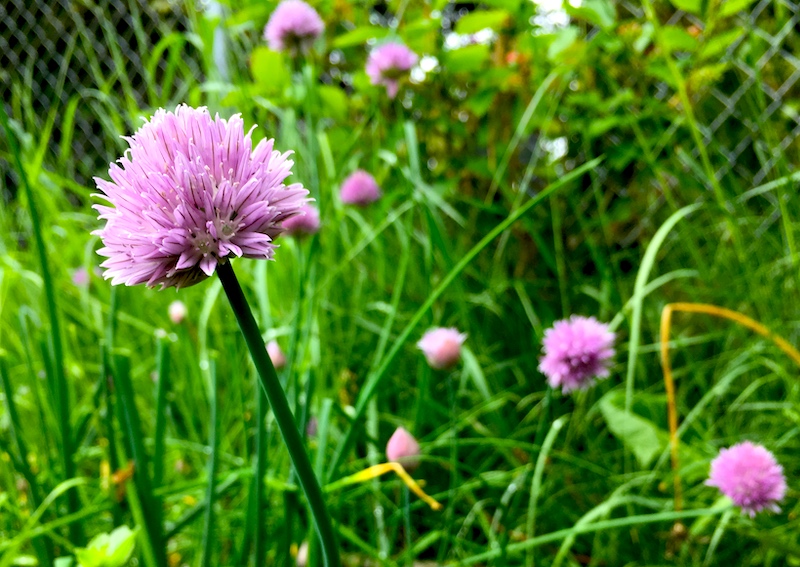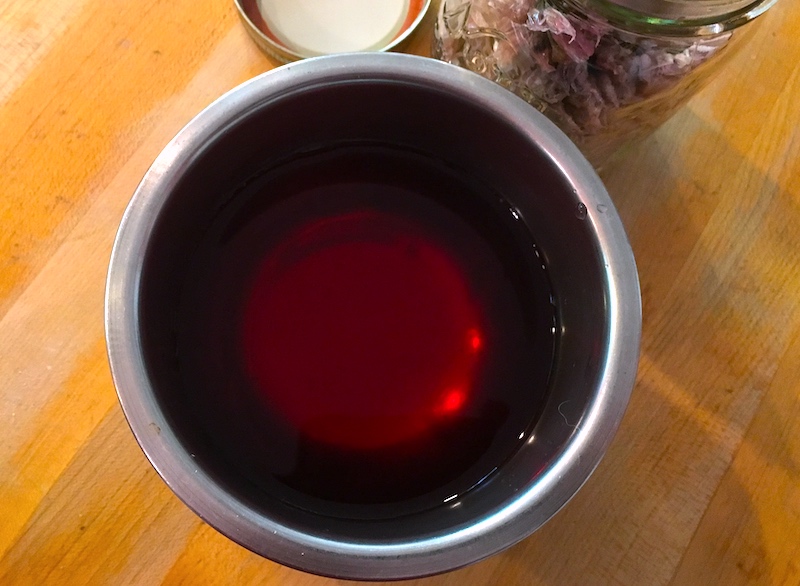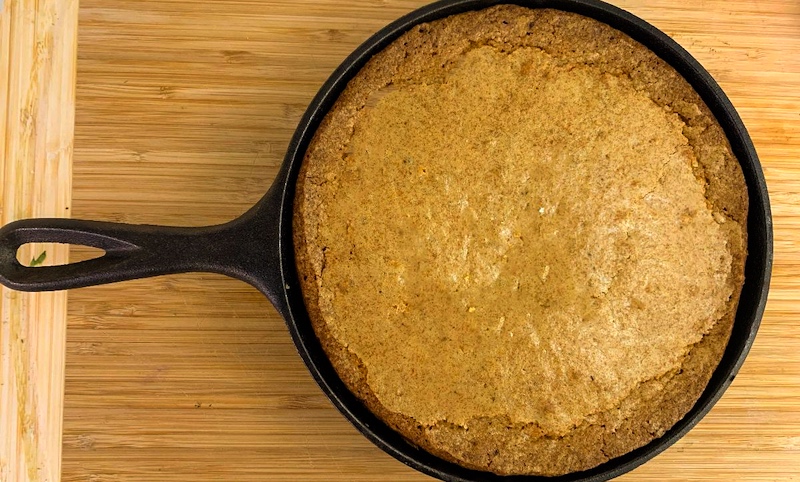
Got Chives? Make Chive Oil and Blossom Vinegar!
I planted chives in my garden a couple of years ago because I love the color and onion-y bite the chopped greens bring to green and grain salads, hot or cold vegetable dishes, eggs, or pasta. So when the purple pompoms of their blossoms started to appear, it seemed like there should be a better use for them than simply as a garnish, which would really only use a few of them. (I'm not a big garnish person, anyway, since most food I make around here disappears before I can "scatter artistically" as Martha Stewart might suggest.)

Doing a bit of research, I found suggestions for making infused vinegar and oil using the chive blossoms and stems which can then be used to make a vinaigrette for salads and vegetables. The vinegar picks up a gorgeous rhubarb-red tint from the blossoms, and the oil gains a light chive flavor from a mix of blossoms and chopped stems, which would be fabulous for dipping crusty bread, Italian-style, or drizzling over crostata or grilled fish. Our house vinaigrette recipe would be perfect using the oil and substituting the vinegar for the lemon juice.

Like most infusions, this is dead simple to prepare, requiring simply blending the chives with oil or vinegar and giving it a few days to infuse. Make enough and you can fill small jars to share with friends!
Chive Blossom Vinegar and Chive Oil
Clip blossoming chives near the base of the stem, trimming off brown or dried parts. Pick off blossoms. Chop stems into 1/2" lengths.
For vinegar, pack blossoms into pint jar (or jars, depending on how many blossoms you have and how much vinegar you'll use). Fill jar with vinegar to within 1/2" of top. I used white wine vinegar, but some recipes call for white vinegar, which to my taste would be too strong; others call for white balsamic vinegar. Seal with lid, but not too tightly, to allow vinegar to breathe. Store in cool, dark place for two weeks. Strain into clean jar(s) and seal with lid(s). Keep up to six months in a cupboard away from heat or light.
For oil, place chopped chives, a few blossoms and enough oil to cover in a blender. Blend on high until completely pulverized then add more oil to thin it. Pour into lidded container and place in refrigerator for four days. Bring to room temperature, strain through fine mesh sieve or cheesecloth into medium bowl or pint measuring cup, then pour strained oil into ice cube tray and freeze. Pop frozen cubes out of trays and place in zip-lock bag. Store in freezer and thaw as needed.

 Preheat the oven to 350°.
Preheat the oven to 350°.